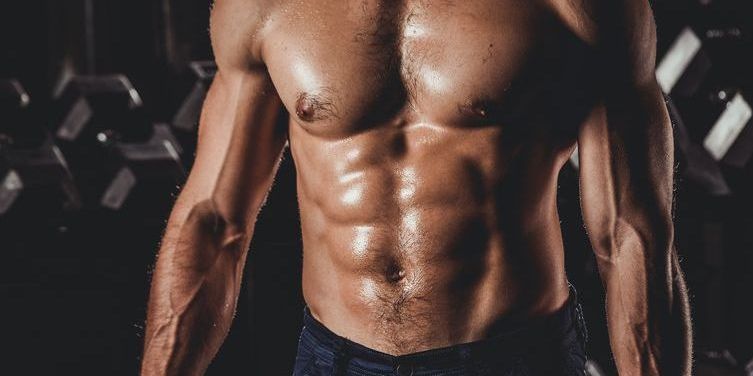By Bruno Jonas

Bruno Jonas is known as Bruno J., the host of the long-running podcast Busting Addiction and Its Myths. In this column, he takes on popular beliefs that often don’t stand up to new insights. If you have an open mind, then this column is for you.
Most of us know that we lose muscle mass and strength as we age, so there’s really nothing new there, right?
I have recently learned, however, that it’s a much bigger problem than we realize. I decided to research this topic after overhearing someone at my gym casually mention the term sarcopenia.
“What in heaven’s name is that?” I asked myself. So I set about learning as much as I could about it, simply because I am an intensely curious fellow. In all the right ways, I hope.
It turns out that the scientists who study aging are all over sarcopenia, which they describe like this: “It is an age-related syndrome characterized by a progressive, generalized loss of skeletal muscle mass, combined with a decline in muscle strength and performance”.
When we lose muscle mass and strength, we shorten our life spans due to the risks of not being physically active and fit. This is a truth that applies to both women and men, yet men are more likely to pay attention to this topic. That’s because they are deathly afraid of looking like that skinny old guy with puny arms and a pot belly to boot. Male vanity, to be sure.
According to authors of this study (I shall describe it at the end of this article), “Sarcopenia-associated morbidity (various diseases), disability, and mortality have made sarcopenia a major global health problem”. (Italics are mine).
Who would have thought? But there it is in black and white, and it was published just last year.
Sarcopenia increases the risk of falls and fractures – the reason older people fall and get injured is that they lose muscle strength and therefore getting weaker by the year.
I won’t list all of the nasty things that this condition brings on, but they all add up to one thing: premature death.
You might be thinking at this point: “Who is this guy, and why is he bringing me bad news?”
I don’t think this is bad news at all. It’s just a warning sign for those of us who believe that aerobics is the answer to life-long fitness and good health. That does not appear to be the case. It looks to be a myth. Maybe that’s the good news, and just in time.
I believed in the aerobics and stamina concept myself until I started looking at the science that pointed in a different direction, away from aerobics as the principal answer to life-long health.
There was just too much evidence in support of a better way for me to extend my journey through life with more energy, passion and less stress.
My curiosity led me to study and practice HIT – High Intensity Training, and when I tried it, I wrecked my back so severely, I had to spend the better part of two weeks lying flat on my aching back with my feet up. Binge-watching Netflix was some consolation.
The lesson, however, was this: it isn’t just about intensity. And “Don’t ever do that again, Bruno!”, was a sharp reminder conveyed by the boss, aka my wife.
Even though HIT or HIIT (High Intensity Interval Training) includes weights usually in the form of dumbbells, the speed involved is too much for someone who is healthy, but is also older and has weaker joints, therefore less able to handle the herky-jerky. That’s how you wreck your back.
Now what?
The answer started to emerge as I began to learn the value of doing everything very slowly.
I studied Somatic movement, which – much oversimplified – focuses on the very slow release of the muscle in the eccentric phase. Example: you start a concentric (up) crunch as you exhale and go back down (eccentric) slowly, all the while exhaling. Which meant that I had to make sure to take a full-belly breath before I even started.
It drove me crazy at first when I applied the concept of going real slow to my weight training approach. It took a while to get me out of the “go all out” mentality I’ve adopted for almost everything.
I am basically lazy when it comes to fitness, and I want the most ROI I can get. I just want to live a long time, not be in too much pain most of the time, have a lot of fun, and stay the hell out of the hospital.
(To that point, I shall discuss sex in middle age in a future column.)
I gained so much more strength more quickly when I slowed down my concentric (up) moves and slowed my eccentric (down) moves even more. I am talking about slowing down a lot.
A count of at least four on the way up (or any contracting move) and a count of at least six on the way down (or any releasing move).
Why is a slower move so important?
With a slow, deliberate move, you will gain resistance throughout your entire range of motion, versus a quick lift up and then a drop down.
Your concentric move (lifting) shortens your muscle, while your eccentric move (releasing) lengthens and stretches your muscle.
What amazed me was the evidence that showed eccentric (also called negative) moves strengthened the muscle by a factor of over 1.5 times versus concentric moves.
Perhaps more important than the move itself is the fact that in order to really slow down, you have to concentrate that much harder; you have to become mindful, to be in harmony with your body, to stop thinking about finishing this set and then on to the next.
You have to be in the moment completely, and for many of us Western A-type achievers who are used to living in our heads, letting go and being in the moment without thinking is next to impossible.
I believe this to be true for men and women alike; the evidence suggests, however, that women are ahead of men when it comes to a type of movement that requires one to be fully present, from Thai Chi to Yoga to Pilates and beyond.

You will find that faster is not better.
You will find, ironically, that slower moves get you there faster. In some cases, those of us (including me) who were throwing the weights around got nothing for it except maybe staying in tone, but we were not getting stronger which is what we are really after, after all.
So, now you see I have taken you to a place you did not expect when I first started talking about sarcopenia as a threat to the health of our aging civilization.
Is this bye-bye aerobics? No. You can keep your aerobics going, or reduce them with little or no effect on your “fitness”, so long as you make muscle strength a personal priority.
If you want to live longer, be stronger and get to a new level of fitness without spending endless hours on the treadmill, bring weights or any other slow resistance training into your routine.
And if you also bring mindfulness to your workout, it will calm your mind and your central nervous system, and you will experience the sensation of time standing still, if only for a little while.
It’s what we need in this all-too-busy world. A calmer mind in a healthier body. A longer, healthier life free of the nasty things that aging brings.
The latest evidence strongly suggests that muscle strength built mindfully will get us there, aerobics or not.
I’m sold. How about you?
Main Sources: Deep Fitness by Philip Sheperd. Published by North Atlantic Books, 2021
European Review of Aging and Physical Activity, under license from Open Access, 2020
Somatic Movement Center, 2022

By Bruno Jonas




